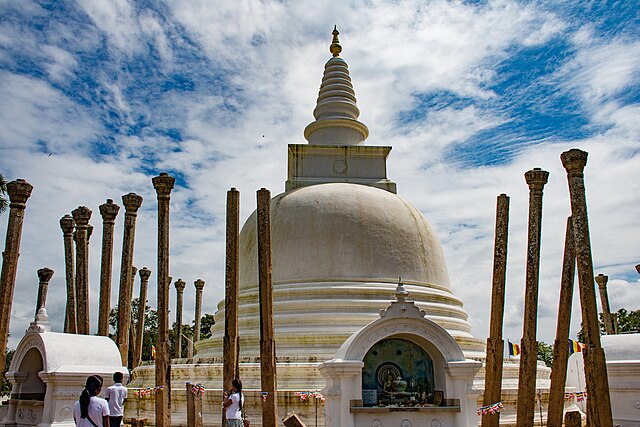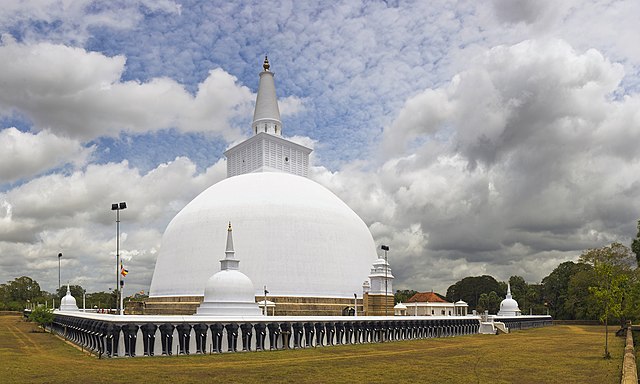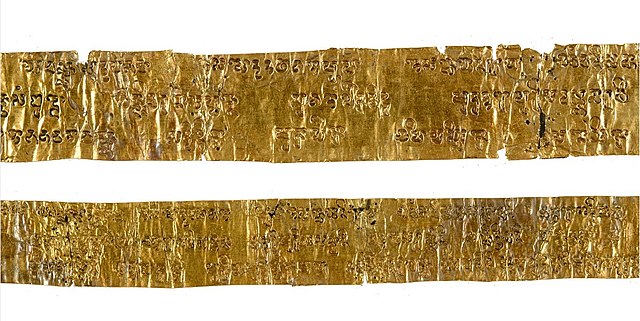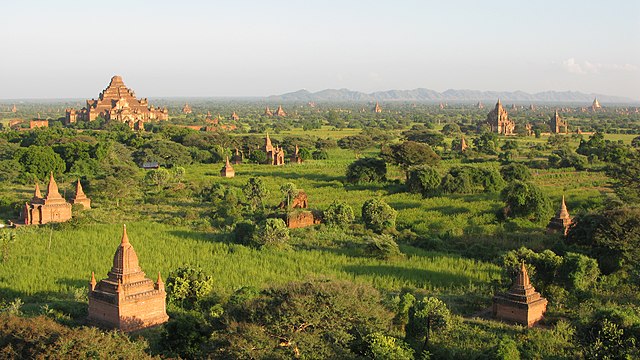The Sixth Buddhist Council was a general council of Theravāda Buddhism, held in a specially built Mahā Pāsāṇa Guhā and pagoda complex at Kaba Aye Pagoda in Yangon, Burma. The council was attended by 2500 monastics from eight Theravādin Buddhist countries. The Council lasted from Vesak (Visākha) 1954 to Vesak 1956, its completion coinciding with the traditional 2500th anniversary of the Gautama Buddha's Parinibbāna. In the tradition of past Buddhist councils, a major purpose of the Sixth Council was to preserve the Buddha's teachings and practices as understood in the Theravadin tradition.
Convening of the Sixth Buddhist Council at the Great Cave Mahā Pāsāṇa Guhā
Theravāda is the most commonly accepted name of Buddhism's oldest existing school. The school's adherents, termed Theravādins, have preserved their version of Gautama Buddha's teaching or Buddha Dhamma in the Pāli Canon for over two millennia.
The Thuparamaya Stupa, the earliest stupa after Theravada Buddhism became the official religion in Sri Lanka, dating back to the reign of King Devanampiya Tissa (247–207 BCE)
The Ruwanwelisaya stupa, built by the Sri Lankan King Dutugemunu (c. 140 BCE)
Gold Plates containing fragments of the Pali Tipitaka (5th century) found in Maunggan (a village near the city of Sriksetra)
Bagan, the capital of the Bagan Kingdom. Between the 11th and 13th centuries, more than 10,000 temples, pagodas and monasteries were constructed in the Bagan plains.





